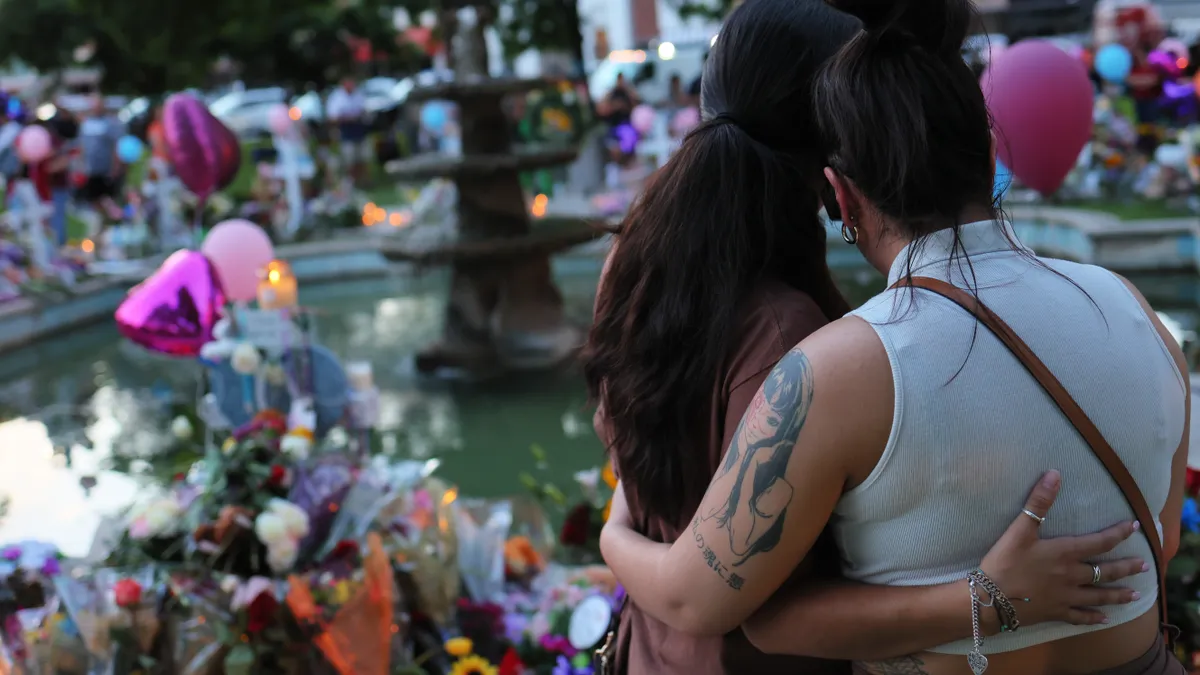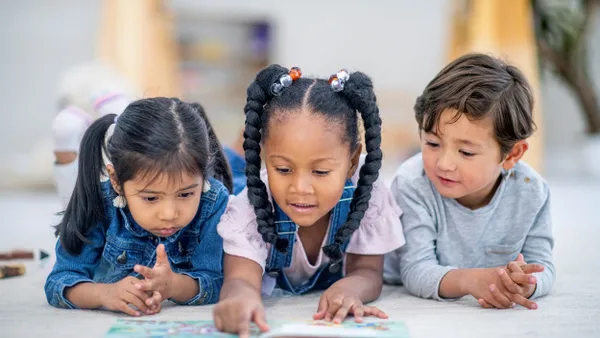Dive Brief:
- The 2020-21 school year had the highest number of school shooting casualties in the past two decades — despite the pandemic keeping many students off campus in remote learning for portions of the year, according to a school crime and safety report released Tuesday by the National Center for Education Statistics.
- The combination of 43 school shootings with deaths and 50 school shootings with injuries in public and private schools was the highest annual figure recorded since the 2000-01 school year, when the data collection began. Crime and safety incidents, however, became less prevalent between 2009 and 2020 with decreased rates of nonfatal criminal victimization, such as theft, and less bullying, student sexual harassment and student harassment of peers based on sexual orientation or gender identity.
- The report, published annually, includes findings from 23 indicators on school crime and safety, including preventative measures. The findings, the 31-page report said, can help inform policy makers and education professionals as they seek solutions to threatening and dangerous school-based activity.
Dive Insight:
The report's findings that show decreased rates of victimization and harassment should be acknowledged by school communities, said Ron Avi Astor, a school safety expert and professor of social welfare at the University of California, Los Angeles.
"People have been working really hard to reduce the bullying, the name-calling, the kicking, harassment kinds of issues, and we've been pretty effective as a country at reducing them," Astor said.
That progress, however, doesn't align with increased incidents of shootings, said Astor, who is a member of the Interdisciplinary Group on Preventing School and Community Violence. The group last month issued an eight-point plan to reduce gun violence after the shooting deaths of 19 students and two teachers and injuries of 17 people at Robb Elementary School in Uvalde, Texas.
The NCES report said that in addition to the 93 school shootings that resulted in deaths or injuries only in the 2020-21 school year, there were 53 school shootings with no casualties.
2020-21 had highest number of school shooting casualties
Some of the interdisciplinary group's school safety recommendations, such as the need to develop positive school climates and coordinated school-community mental health services, match with the newly enacted Bipartisan Safer Communities Act that provides more than $2 billion to improve school-based mental health services, learning conditions and school safety.
Astor said schools are struggling with the capacity to address psychological stressors such as pandemic-induced hardships, racial injustice and political strife.
In 2019–20, the NCES report found, about 55% of public schools provided diagnostic mental health assessment services to evaluate students for mental health disorders, and 42% offered mental health treatment services. Middle and high schools had higher rates of mental health assessments and services compared to elementary schools.
Expanding mental health services in schools is helpful, Astor said, but a more comprehensive, proactive approach to school safety — including professional development, discipline policies, supports for educators and students, activities to empower communities and more — is needed.
"Anybody who's been in a school knows that you have a whole organizational system, they're in a whole ecological system, and to create a positive climate or to create a situation where there's harm involved is usually not just one person," Astor said.
The NCES report includes data about security measures, discipline problems, gangs, hate-related speech, possession of weapons, and use and availability of illegal drugs, as well as discussion about percentages of teachers who reported having been threatened or attacked by students.
Data in the report comes from statistical data sources supported by the federal government. Such sources include results from the School-Associated Violent Death Surveillance System, the National Vital Statistics System, and the K-12 School Shooting Database.
The report doesn't include statistics from the recently concluded 2021-22 school year that included the Uvalde shooting, or victimization data and safety prevention activity.
In July, NCES plans to release new data from the School Survey on Crime and Safety, which was administered during the 2019-20 school year and includes a nationally representative cross-sectional survey of about 4,800 public elementary and secondary schools.








 Dive Awards
Dive Awards







